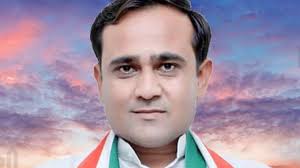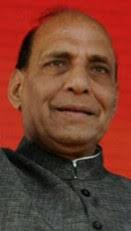Ayodhya, a city in India, is set to observe the terrific opening of a sanctuary devoted to Ruler Smash. Millions of people believe that the temple was built on the very spot where Lord Ram was born, making this event a religious spectacle. State leader Narendra Modi is driving the function, which is critical as he looks for an uncommon third term in the impending races.
The development of this temple has been a 35-year-old commitment by Modi’s Hindu patriot Bharatiya Janata Party (BJP). The party rose to power and prominence thanks to this contentious issue.
Hindu gatherings are depicting the initiation function as an image of Hindu resurrection subsequent to persevering through oppression by Muslim and pilgrim powers for quite a long time. Moreover, this occasion is viewed as the virtual send off of Modi’s re-appointment crusade, displaying his profoundly strict persona.
The temple site has been a subject of harsh debate among Hindus and Muslims for a long time. It turned into a flashpoint for viciousness when a Hindu horde destroyed a sixteenth century mosque in 1992. As indicated by India’s larger part Hindus, this site holds incredible strict importance as the origination of Master Smash. They hold the belief that Muslim Mughals destroyed a Hindu temple before building the Babri Masjid, a 1528 mosque. The land was given to Hindus in 2019 by the Supreme Court of India, while Muslims were given a separate plot.
To officially open the temple, Modi will take part in a number of rituals on Monday. Great many BJP individuals, strict pioneers, and aficionados from the nation over are supposed to accumulate in Ayodhya for this groundbreaking event.
Religious Outpouring and Political Controversy
Political Controversy and Religious Outpouring Modi stated, “The consecration allows me to represent all of India’s citizens in this auspicious moment,” expressing his deep connection to the occasion. Following the authentic setting, he has asked Indians to light lights in their homes and sanctuaries, reflecting the festivals of Diwali, the celebration of lights which generally happens in October-November.
Prithvi Datta Chandra Shobhi, a political reporter and teacher at Krea College in southern India, remarked, “The temple’s sanctification feels more like the beginning of the overall political race as opposed to a strict custom. The state leader appears to encapsulate the job of a ruler undertaking a critical formal penance.”
The sanctuary, arranged on a 2.67-section of land (1.08-hectare) site inside a 70-section of land (28.33-hectare) complex, is at present in its most memorable period of consummation. The last stage is supposed to be done by December 2025. The venture, assessed to cost 15 billion rupees ($181 million), is altogether financed by gifts from inside the country.
In front of the sanctification, India has seen a mind-boggling show of feelings among Hindus. Private settlements, markets, and sanctuaries are enhanced with heavenly banners, and extraordinary petitions to God are being coordinated. Many are wanting to watch the live broadcast of the occasion on goliath screens.
Notwithstanding, the introduction has blend a political debate as significant resistance groups, including the Congress, have declined solicitations to join in, expressing that it has changed into a political occasion for Head of the state Modi.
Muslim gatherings, albeit discontent with the 2019 court decision giving the site to Hindus, have acknowledged it with lowliness. They have shown that they have continued on. Zufar Ahmad Faruqi, the top of the Indo-Islamic Social Establishment liable for building another mosque in Ayodhya, roughly 25 km (15 miles) from the sanctuary, expressed, “The sanctuary’s development is advancing as per the High Court’s order, and we invite it. There is no enmity inside the Muslim people group.”



